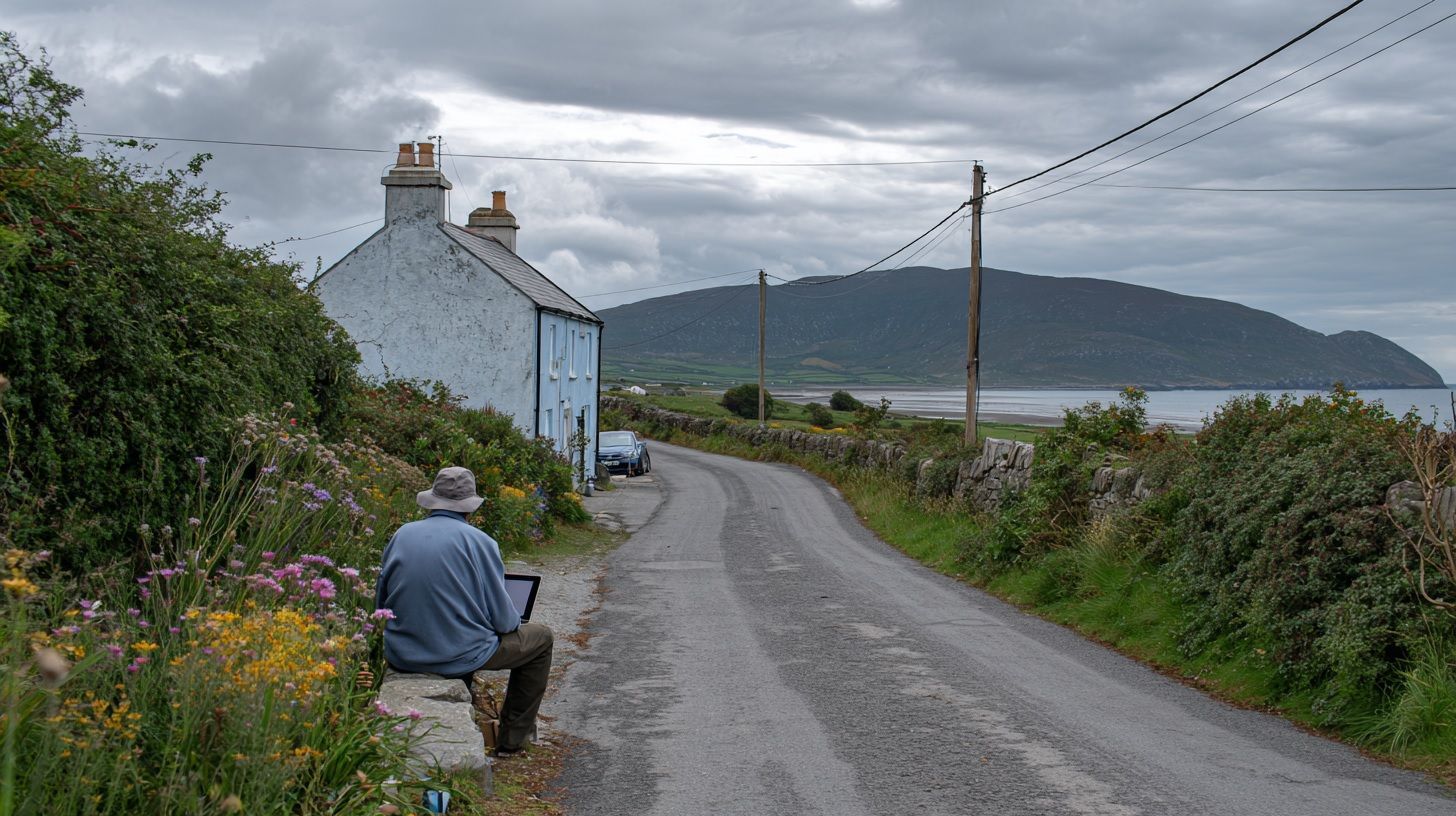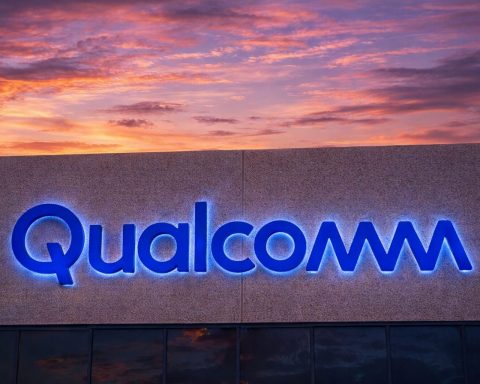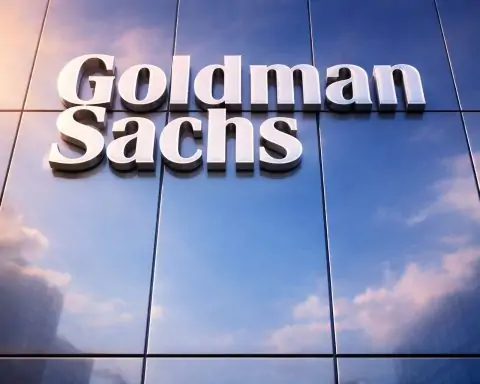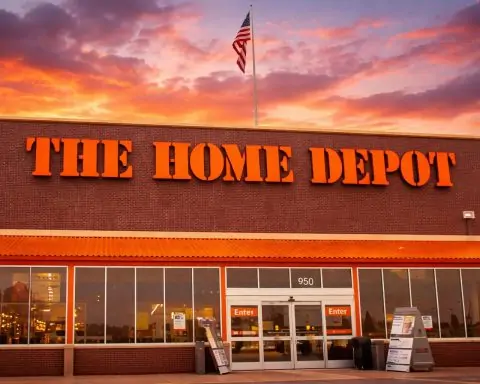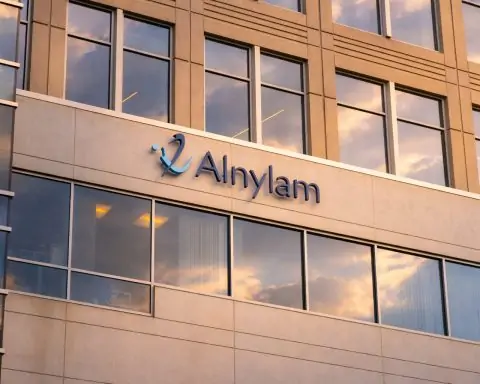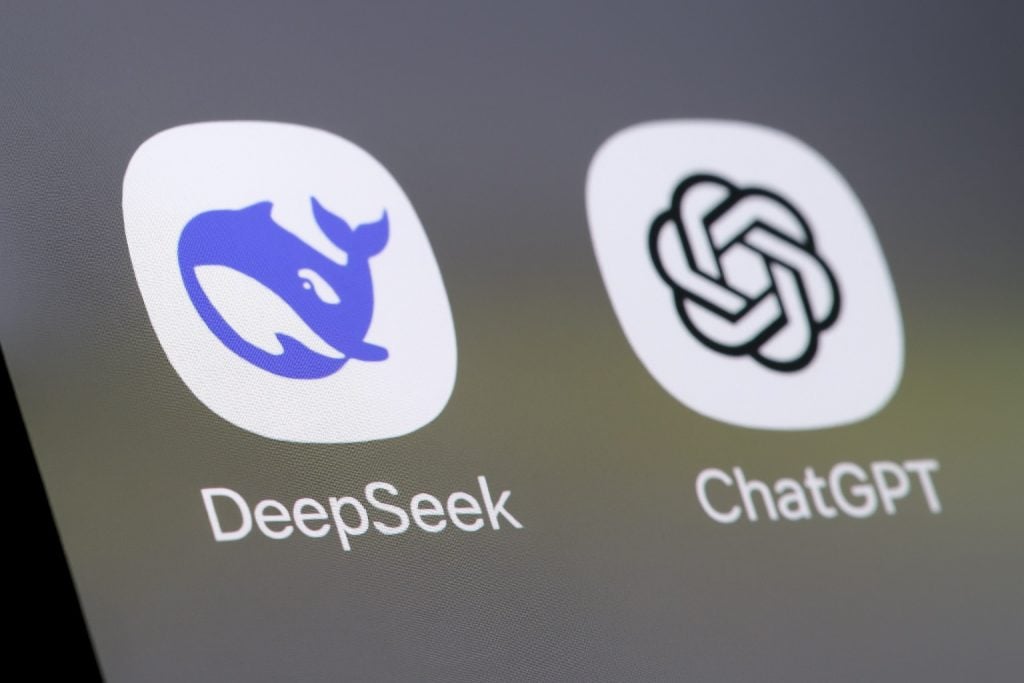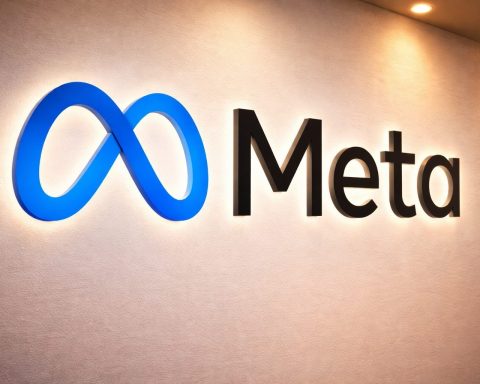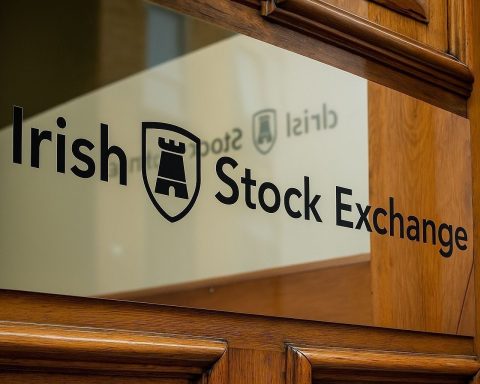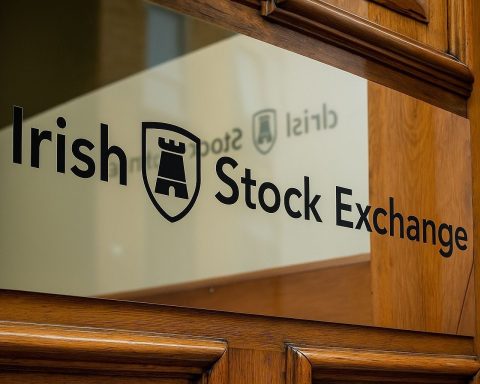- As of early 2025, about 98–99% of Ireland’s population is online and roughly 94% of households have internet access.
- In 2025 the median fixed broadband speed was about 146 Mbps, with the 2024 average around 103 Mbps and Ireland ranking around 40th globally.
- Gigabit-capable broadband is available to about 86% of premises nationwide in 2025, and pure fiber FTTP coverage is roughly 76% of premises as of Q1 2025.
- Two-thirds of rural homes and businesses can access high-speed internet thanks to fiber rollouts between 2023 and 2025.
- Starlink entered Ireland in 2021 and by 2025 is widely used in rural areas, delivering typical download speeds of 100–200 Mbps and latency of 20–50 ms for about €50 per month.
- The National Broadband Plan contracts were finalized in 2019 with National Broadband Ireland to build fiber to about 540,000 rural premises, offering minimum 500 Mbps speeds under a 25-year wholesale open-access framework.
- By May 2025, two-thirds of the target rural premises (367,000 of ~564,000) have been passed with fiber and can order service, with over 129,000 rural customers connected.
- By end-2024, around 65% of fixed business broadband lines were gigabit-class (≥1 Gbps), according to ComReg.
- Ireland’s major broadband players—Eir, Vodafone (with SIRO), and Virgin Media—offer fiber and cable networks, with Virgin’s footprint covering about 1 million premises and gigabit speeds to roughly 86% of premises by 2025.
- The government aims for 100% gigabit coverage by 2026–2027 and to meet EU Gigabit Society 2030 targets well ahead of schedule.
A Nation Going Online at Breakneck Speed
Ireland has undergone a dramatic transformation in internet connectivity, achieving near-universal internet usage and high speeds by 2025. An estimated 98–99% of the Irish population is online as of early 2025 [1] [2]. Approximately 94% of households have an internet connection [3], with the vast majority using fixed broadband (86% of households) rather than dial-up or mobile-only access [4]. Urban areas enjoy almost 100% internet availability – in Dublin, 97% of households are connected [5] – while rural regions historically lagged slightly behind (around 91% of households in 2024 in some border and midland counties) [6]. However, ongoing rural broadband initiatives are rapidly closing this gap.
Internet Speed Boom: Average and median broadband speeds in Ireland have surged in recent years. Ireland’s median fixed broadband download speed stands around 146 Mbps in 2025 [7], a huge leap from just a few years ago. By comparison, the country’s average broadband speed was about 103 Mbps in 2024 [8], up from ~76 Mbps the year prior – ranking Ireland around 40th globally for speeds [9]. Urban users typically enjoy ultrafast connections (many cities have gigabit cable or fiber). Rural users historically suffered with slow DSL or wireless links, but this is changing fast. In 2022, high-speed broadband was virtually universal in urban areas (~94% coverage), whereas as few as 54% of rural premises had high-speed access at that time [10]. Thanks to aggressive fiber rollouts in 2023–2025, two-thirds of rural homes and businesses can now get high-speed internet, vastly reducing the urban–rural digital divide [11] [12].
Usage Trends: Irish people are not only connected, they’re heavy internet users. Over 95% of internet users go online daily [13] [14], and 39% say they are online “almost constantly” [15]. Data consumption is high and rising – the average fixed broadband subscriber now uses about 500 GB of data per month (residential) [16], reflecting the prevalence of video streaming, remote work, and cloud services. Mobile internet usage is also ubiquitous; Ireland had 5.22 million internet users (98.9% penetration) by 2025 when counting mobile access [17], and smartphone usage is widespread even in rural communities.
Major Internet Service Providers: Eir, Vodafone, Virgin Media & More
Ireland’s broadband market is served by a mix of former state telecom operators, cable companies, and newer fiber entrants, resulting in fierce competition and improving value for consumers. The major traditional ISPs as of 2025 include Eir, Vodafone Ireland, and Virgin Media, along with Sky, regional fiber providers, and dozens of smaller resellers. Below is a comparison of the big three in terms of their networks, offerings, pricing, and coverage:
| Provider | Network & Technology | Max Speeds & Plans | Typical Monthly Price (Standalone Broadband) | Coverage Footprint |
|---|---|---|---|---|
| Eir – Ireland’s former incumbent (telco) | Fixed-line: DSL and FTTH (fiber-to-the-home via Open Eir network); also offers mobile broadband | Up to 1 Gbps on fiber; legacy DSL offers 24–100 Mbps depending on line; common fiber tiers: 150 Mbps, 500 Mbps, 1,000 Mbps [18] | ~€40–€60 (promotional rates often €35–€45 for 12 months, then standard ~€60 for 1 Gbps). Bundles with phone or TV available. | Nationwide: DSL available to most lines; Fiber FTTH available to ~76% of premises [19] (focus on towns and new rural rollout). Eir’s fiber network (Open Eir) passes ~1.9 million premises, including many rural areas. |
| Vodafone (and partners like SIRO) | FTTH via two networks: (1) Open Eir wholesale fiber, and (2) SIRO (a joint venture fiber network by Vodafone & ESB). Also mobile 4G/5G broadband offerings. | Up to 1 Gbps on fiber. Vodafone’s top plans offer ~500 Mbps to 1000 Mbps. SIRO network supports 1 Gbps (and trials of 2 Gbps) [20] [21]. 4G/5G home routers offer ~50–100 Mbps in good coverage. | ~€40–€55 (often intro deals ~€30 for 6 months). Similar pricing to Eir for comparable speeds. Mobile broadband plans ~€30–€40 (with data caps). | Urban & Provincial Towns: Vodafone (via SIRO) covers ~450,000 premises in 50+ towns with fiber; via Open Eir it can reach most fiber-enabled areas nationwide. Mobile broadband available wherever Vodafone has 4G/5G (over 99% 4G population coverage, 5G in most towns [22]). |
| Virgin Media (formerly UPC/NTL) | Cable (DOCSIS) network in cities & towns; upgrading gradually to full fiber (XGS-PON) in some areas [23]. Also offers mobile (as MVNO) but core business is broadband/TV. | Up to 1 Gbps on cable (DOCSIS 3.1). Common packages: 250 Mbps, 500 Mbps, 1000 Mbps. Upload speeds lower on cable (e.g. 50 Mbps up on gigabit plan). Future: transitioning to fiber with potential 2–5 Gbps capabilities [24]. | ~€50–€70 standalone (frequent bundle discounts for TV+internet). For example, ~€55 for 500 Mbps, €60–€65 for 1 Gbps (promos apply). | Cities & Large Towns: Covers ~1 million premises in Dublin, Cork, Limerick, Galway, and many towns via cable network. Gigabit-capable to ~86% of premises (including Virgin’s footprint) as of 2025 [25]. Limited presence in rural areas (primarily urban-focused). |
Table 1: Comparison of major broadband providers in Ireland (2025). Each also has competitors: Sky Ireland resells Open Eir fiber, Digiweb/Pure Telecom offer plans on multiple networks (even 2 Gbps on SIRO [26]), and many regional wireless ISPs serve remote areas. Prices have been trending downward as speeds increase – Ireland historically had very high broadband costs (Dublin was once ranked the 2nd most expensive city for internet in 2019) [27], but by 2025 consumers see better value due to competition and regulator pressure on wholesale fees.
Network Coverage: The vast majority of Irish homes now have access to “next-gen” broadband. In fact, gigabit-capable broadband (via either full fiber or cable DOCSIS) is available to about 86% of all premises nationwide [28]. Pure fiber FTTP coverage has grown from ~48% of premises in 2020 to 72% in 2022 [29], and as of Q1 2025 has reached roughly 76% of premises [30]. This rapid deployment is thanks to massive investments by Eir (deploying rural fiber and urban fiber upgrades), SIRO’s town-by-town rollout, and the government-subsidized rural program (discussed below). The remaining gap (mostly rural farms and villages) is actively being addressed so that Ireland is on track to meet EU “gigabit society” targets ahead of many peers.
Typical Offerings: Consumers in cities can choose from dozens of packages, from basic 100 Mbps plans to gigabit bundles with TV and phone. Over 67% of broadband customers now subscribe to ≥500 Mbps speeds (up from 47% a year prior) [31], showing a clear preference for ultrafast tiers. Notably, 19% of customers have gigabit (1000 Mbps) plans already [32]. Even in rural towns, multiple providers compete using wholesale fiber – for example, an area enabled by the National Broadband Plan might have 50+ retail ISPs offering service over the open-access fiber network [33]. This competition has led to more uniform pricing: rural users generally pay the same for fiber as urban users, a big change from the past when rural folks paid more for inferior satellite or wireless plans.
Satellite Internet Rising: Starlink Shakes Up Rural Connectivity
While fiber and cable dominate in towns, satellite broadband has emerged as a game-changer for Ireland’s most remote areas. SpaceX’s Starlink low-earth orbit (LEO) satellite service became available in Ireland in 2021 and by 2025 has been adopted by many rural homes, farms, and even boats – anywhere terrestrial broadband is limited. Unlike legacy satellite internet (which was infamously slow and high-latency), Starlink offers broadband speeds comparable to DSL or even fiber, with latency low enough for Zoom calls and gaming.
- Availability: Starlink can be ordered anywhere in Ireland with a clear view of the sky [34]. In practice, this means even rugged islands, mountain valleys, or dispersed farms – some of which are still waiting on fiber – can get connected in days by installing a pizza-sized dish. Early pilots in 2021 (e.g. in Kerry’s Black Valley) demonstrated Starlink’s ability to bring internet to “blackspots” years before cables arrive [35] [36].
- Speeds & Performance: Most Starlink users in Ireland report download speeds around 100–200 Mbps, with some experiencing bursts up to ~300 Mbps [37]. Upload speeds (~20–40 Mbps) and latency (~20–50 milliseconds) are vastly superior to old geostationary satellites (which had 600+ ms lag). This means Starlink can support Netflix, video calls, VPNs for remote work, and online gaming reliably [38] – a revelation for rural customers who previously had to rely on 4G or 3G with poor signals. Starlink’s performance is approaching that of fixed networks, even rivalling 4G/5G in some cases [39].
- Pricing: As of 2025, Starlink’s residential service in Ireland costs €50 per month for the standard plan (unlimited data) [40]. There is also a “Residential Lite” plan around €35/mo (which provides unlimited data but with lower priority speeds) [41]. The hardware (dish, router) is a one-time cost – often around €300–€400 – though promotions have offered discounted or even free hardware with a 12-month commitment [42]. The monthly fee has actually dropped from earlier prices (~€99 in 2021, then €65 in 2023) down to €50, making it increasingly competitive [43]. By comparison, rural families paid similar amounts for inferior 4G-based wireless broadband (often €40–€60 with data caps), so Starlink’s value proposition is strong.
- Impact on Rural Communities: Starlink has been transformative for underserved communities. Farmers in remote townlands use it to run their businesses online; some rural students attended remote classes via Starlink during pandemic lockdowns, and B&B operators in scenic but connectivity-poor locales can finally offer Wi-Fi to guests. The Irish government even partnered in early trials (e.g. installing Starlink at rural Broadband Connection Points like community centers) as a stop-gap until fiber arrives [44]. Local feedback has been positive – what used to be a “last resort” (satellite) is now a sought-after interim solution. However, Starlink’s uptake may plateau as fiber networks reach every home under the National Broadband Plan. It’s likely that in truly unreachable spots (offshore boats, very isolated homes) satellite will remain vital, but many rural users will migrate to fiber once available, using Starlink perhaps as a backup.
Besides Starlink, other satellite options are limited. Traditional geostationary providers (e.g. ViaSat/KA-SAT through Irish resellers) still exist but offer lower speeds (~30–50 Mbps) and strict data caps, thus have largely fallen out of favor. Looking ahead, OneWeb (another LEO constellation) and Amazon’s Project Kuiper may introduce services in Europe that could further boost competition in satellite internet, possibly driving prices down or providing specialized enterprise connectivity.
To put the different technologies in perspective, here’s how satellite vs. terrestrial broadband options in Ireland compare:
| Feature | Starlink (Low-Earth Orbit Satellite) | Fiber-to-the-Home (FTTH) | 5G/4G Wireless Broadband | DSL (Copper Phone Line) |
|---|---|---|---|---|
| Download Speed | ~100–200 Mbps typical (peaks ~300 Mbps) [45] | 500–1000+ Mbps (gigabit plans common; multi-Gig coming) [46] | ~50–150 Mbps (depends on signal, 5G can reach 100+ Mbps) | ~10–70 Mbps (very distance-dependent; many rural DSL lines on lower end) |
| Upload Speed | ~20–40 Mbps | 50–100+ Mbps (often symmetric on fiber) | ~10–50 Mbps (5G can approach 50 Mbps up) | ~1–20 Mbps (typically low on ADSL/VDSL) |
| Latency (Ping) | ~20–50 ms (suitable for video calls, gaming) [47] | ~5–20 ms (very low latency, excellent quality) | ~20–40 ms on 4G; ~10–20 ms on 5G (if good signal) | ~30–80 ms (higher if long copper loop) |
| Monthly Cost | ~€50 (plus one-time equipment ~€300) [48] | €40–€70 (varies by speed tier; equipment usually free or small rental) | ~€30–€50 (data-capped plans may cost more for extra GB) | ~€30–€50 (usually similar to fiber price for legacy packages) |
| Data Caps | None (truly unlimited data) [49] (“Lite” plan may prioritize heavy users slower) | None (unlimited flat rate) | Often capped (e.g. 1 TB or “fair use” on wireless plans) | None (unlimited, but performance is slower anyway) |
| Availability | Anywhere with a clear view of sky [50] (100% geographic coverage) | ~76% of premises covered by fiber as of 2025 [51]; expected ~100% by 2027 after NBP completion. | >99% population has some 4G; 5G available in most towns and expanding to rural [52]. | Legacy telephone network covered ~95% of premises; being phased out as fiber replaces copper. |
Table 2: Satellite vs Terrestrial Broadband in Ireland (2025). Starlink’s niche is clearly remote coverage rather than raw speed – fiber beats it in absolute performance and consistency, but Starlink’s big advantage is availability in hard-to-reach spots. It has essentially eliminated Ireland’s remaining “broadband blackspots” years before the fiber rollout finishes. Industry observers note that Starlink also provides a competitive check on rural fiber ISPs – ensuring that no single provider can gouge customers, since now rural users have an alternative.
A Brief History of Ireland’s Internet Infrastructure Development
Ireland’s journey from dial-up laggard to broadband leader has spanned decades of investment and policy. Here are key milestones in the country’s internet infrastructure history:
- 1990s – The Dawn of Internet: Ireland’s first internet connection was established in 1991 at Trinity College Dublin, initially shared with the country’s first ISP (IEUnet) [53]. Through the 90s, internet access was mostly dial-up over telephone lines. Eircom (the state telecom, later privatized as Eir) provided dial-up ISP services, and usage grew gradually. Connections were slow (28.8k to 56k modems) and charged by the minute, making internet a luxury for many until flat-rate packages arrived around 1999–2000.
- Early 2000s – Broadband Debut: In 2002, Eir began rolling out broadband DSL over phone lines [54]. Initial DSL speeds were 512 kbps to 1 Mbps, a huge improvement over dial-up. Cable TV companies (NTL, Chorus – later to become Virgin Media) started offering cable modem broadband in cities around the same time. By the mid-2000s, Ireland had a growing broadband base but still lagged Western Europe in penetration and speed. The government recognized this and invested in backbone infrastructure – for example, building Metropolitan Area Networks (MANs) (fiber rings in regional towns) to help telecoms provide local backhaul.
- 2010s – Fiber and 4G Era: From 2010 onward, broadband speeds leapt ahead. Eir rolled out Next Generation Broadband (FTTC) – fiber-to-the-cabinet with VDSL – which by 2011–2012 enabled ~70% of lines to get 30–100 Mbps [55] [56]. UPC (Virgin Media) upgraded cable networks to deliver 120 Mbps, then 240 Mbps, reaching 360k homes. Meanwhile, mobile networks launched 4G LTE in 2013, giving tens of Mbps to smartphones and wireless broadband users. By the late 2010s, fiber-to-the-home (FTTH) arrived: SIRO (the ESB/Vodafone joint venture) began gigabit fiber builds in 2015, and Eir announced its own rural FTTH rollout to 330k premises (completed around 2018). These efforts were laying the groundwork, but a large portion of rural Ireland still had only sub-30 Mbps speeds, hence the National Broadband Plan was conceived to address the “final third.”
- 2012 – National Broadband Plan (NBP) Announced: In 2012, the government set ambitious targets: by 2020, minimum 30 Mbps for all citizens, 40+ Mbps for most, and 70–100+ Mbps for at least half the population [57]. This recognition that broadband is essential led to years of planning, mapping, and eventually a contract to subsidize rural fiber (details in the next section). The NBP would become the largest telecom infrastructure project in Irish history.
- 2020s – Gigabit Broadband Revolution: The current decade has seen Ireland become a front-runner in connectivity. By 2022, 84% of the country had access to Very High Capacity Networks (VHCN – meaning gigabit cable or fiber) [58], above the EU average. FTTP coverage rocketed from 48% in 2020 to 72% in 2022 [59], and continues to rise as Eir, SIRO, and NBI (National Broadband Ireland) lay fiber across the nation. In mobile, 5G networks went live in 2020 and now cover 84% of populated areas as of 2022 [60], supporting wireless home broadband and IoT. Average broadband speeds surpassed 100 Mbps [61], a far cry from the 0.5 Mbps of two decades earlier. The historical urban–rural gap, once a major issue, is shrinking rapidly due to the NBP rollout and technologies like Starlink. In short, Ireland in 2025 is a country where “broadband for all” is nearly a reality – a remarkable turnaround from being seen as a laggard in the early 2000s.
Government Initiatives: The National Broadband Plan (NBP) and Policy Efforts
The National Broadband Plan has been the cornerstone of Ireland’s connectivity strategy, ensuring that no corner of the country is left offline. First outlined in 2012 and finally contracted in 2019, the NBP is a government-subsidized scheme to deliver fiber-optic broadband to ~540,000 premises in rural and remote areas that private operators deemed uneconomic to serve. This represents about 25% of all addresses, covering 96% of Ireland’s land mass (truly the farms, islands, and far-flung homes) [62]. Key points about the NBP:
- Ambitious Goals: The NBP guarantees minimum speeds of 500 Mbps (initially 150 Mbps, upgraded to 500 as tech improved) to every home, farm, school, and business in the intervention zone [63]. The network is fiber-to-the-home, meaning these rural users get the same gigabit-capable fiber as any city dweller. This future-proof approach was chosen to avoid having to revisit rural upgrades for decades.
- Execution by NBI: A dedicated entity, National Broadband Ireland (NBI), was created to build and operate the network under a 25-year contract. NBI operates as a wholesale open-access provider – it doesn’t sell to consumers directly but enables any retail ISP to use its fiber. As of mid-2025, nearly 70 retail providers have signed up to offer services on the NBI network [64] [65], ensuring competition in rural broadband prices.
- Progress (2025 Status): The rollout, which began in 2020, has picked up pace despite early delays. By May 2025, two-thirds of the target rural premises (367,000 out of ~564,000) have been passed with fiber and can order service [66] [67]. Over 129,000 rural customers have already connected to NBI fiber, a take-up rate of about 35% (and climbing) [68] [69]. In areas where the network went live first (18+ months ago), adoption has reached as high as 50–60% as skeptical locals see neighbors signing up and delivering great results [70] [71]. NBI reports that 95% of the entire project is in or beyond the construction phase (meaning fiber build is underway or completed for almost all areas) [72]. Notably, 100% of planned premises have been surveyed and designed, and even 10 of 27 targeted offshore islands now have live fiber connections [73]. Full completion of the NBP is expected by around 2026–2027, after which Ireland will have one of the most comprehensive national fiber networks in the world.
- Social and Economic Impact: Government reports and independent research are already touting the NBP’s benefits. Early evidence shows improved quality of life and new job opportunities in connected rural areas [74]. Families no longer have to relocate for connectivity; rural entrepreneurs can operate online businesses or remote-work for global companies. The initiative is reversing brain-drain in some communities, as young people see they can live locally without sacrificing digital access. Politically, the broadband plan enjoys broad support – it is framed as ensuring equal opportunity for rural citizens in the digital age, much like the rural electrification of the 1950s transformed Irish countryside life.
- Other Government Efforts: Alongside the NBP, the government launched interim measures like Broadband Connection Points (BCPs) – free Wi-Fi hubs (e.g. in community halls or GAA clubs) set up in advance of fiber, often via high-speed wireless links. There are 900+ BCPs live, including many in schools [75], giving rural residents a place to access high-speed internet (for remote work or study) until their area gets fiber. The government is also focused on 5G spectrum allocation (ComReg’s completed spectrum auction in 2023 [76] aims to push 5G to 100% coverage by 2030). Additionally, initiatives like digital skills training for older citizens, e-government services expansion (Ireland scores highly in EU digital public services [77]), and incentives for telecom investment (e.g. rates relief for new rural poles/fiber) have all complemented the physical infrastructure rollout.
Internet Access for Businesses and Enterprises
High-speed internet is not just a household utility – it’s a backbone of Ireland’s economy, which hosts a large tech sector and many data-heavy industries. In 2025, virtually all Irish businesses, from Silicon Docks tech giants to SMEs in small towns, depend on robust internet connectivity:
- Urban Business Connectivity: In cities like Dublin, Cork, and Galway, businesses typically have access to premium connectivity options. Dedicated fiber leased lines (symmetric speeds of 1–10 Gbps) are available from providers such as Eir Business, BT Ireland, Virgin Media Business, Enet, and others. There are carrier-neutral fiber networks in many business parks and metropolitan fiber loops (MANs) that provide redundancy. Dublin is a major data center hub in Europe, and the presence of the Internet Neutral Exchange (INEX) with multiple data centers [78] means local traffic can be exchanged efficiently. Enterprise broadband costs have been decreasing as more competitors enter the market – even smaller firms can now afford 1 Gbps fiber service through shared GPON networks or dedicated circuits. As a result, over 65% of all fixed broadband lines purchased by the end of 2024 had speeds ≥1 Gbps in the business sector [79] [80] (one report noted 65.5% of fixed lines sold were gigabit-class by end 2024, likely reflecting many business subscriptions). Companies also often maintain 4G/5G backup connections for resiliency, given the high availability of mobile networks.
- Rural and SME Access: A key benefit of the National Broadband Plan is that it brings enterprise-grade connectivity to rural businesses. Thousands of farms and small businesses in NBP areas are getting fiber for the first time – by June 2025, over 40,000 farms had access to high-speed broadband under the NBP [81] [82]. This means agri-businesses can adopt IoT sensors, live-monitoring, and e-commerce more easily. Small shops or hotels in remote regions, previously stuck on slow ADSL or costly satellite links, can now run cloud-based point-of-sale systems, offer guest Wi-Fi, and utilize online booking platforms without issue. The average data consumption of business broadband lines is around 345 GB per month (Q1 2025), which, while slightly lower than households, grew 17% year-on-year [83] – indicating more cloud applications, VoIP usage, and perhaps less video streaming than homes but still heavy use.
- Remote Work Trend: The COVID-19 pandemic forced a widespread shift to remote working in 2020–2021. Even post-pandemic, many companies have adopted hybrid models. This has blurred the line between residential and business connectivity needs – home broadband now effectively doubles as enterprise infrastructure for teleworkers. Ireland’s improved home broadband has enabled this shift: employees in a village can join Microsoft Teams calls as smoothly as those in a Dublin office. The government has encouraged this via grants for home office setup and by establishing remote working hubs (often leveraging NBP fiber or BCPs). Many multinational firms in Ireland now recruit talent countrywide, confident that connectivity won’t be a bottleneck.
- Digital Business Landscape: With excellent connectivity, Irish businesses are leveraging technologies like never before. The country’s high broadband and mobile penetration facilitates e-commerce (Ireland has among the highest rates of online shopping in the EU [84]), cloud service adoption, and digital entrepreneurship. Ireland is also known for its concentration of tech multinationals – companies like Google, Microsoft, Facebook (Meta), Amazon etc., which base European operations in Dublin. They benefit from Ireland’s robust international connectivity (transatlantic submarine cables land in Ireland, providing huge capacity) and local fiber networks for their offices and data centers. Additionally, indigenous companies in finance, media, and gaming are now able to operate globally thanks to world-class connectivity.
Future Outlook: Gigabit Everywhere and Next-Gen Tech on the Horizon
Ireland’s internet landscape in 2025 is impressive, but the coming years promise even more technological advances:
- 100% Gigabit Coverage: The most immediate milestone will be the completion of the National Broadband Plan by ~2026/27. By then, every one of the ~2.4 million premises in Ireland, from central Dublin to the rural Atlantic coast, is expected to have access to gigabit-speed broadband (either via fiber or upgraded cable). Universal coverage will be a reality – a point of national pride and a magnet for investment in rural areas. We can expect the remaining small gaps (some very remote islands or hinterlands) to be filled by either fiber extensions or satellite solutions. Policymakers project that Ireland will meet the EU’s “Gigabit Society 2030” targets well ahead of schedule, putting it among the best-connected nations.
- Multi-Gigabit and Fiber Upgrades: With fiber widely deployed, ISPs are already looking at multi-gigabit services. SIRO and Digiweb have trialed 2 Gbps residential connections [85] [86], and the underlying technology (XGS-PON) can support up to 10 Gbps. Virgin Media’s plan to replace coax with full fiber will enable offerings of 2–5 Gbps in the near future [87]. It’s likely that by the late 2020s, Irish consumers and businesses will see affordable 2 Gbps or 5 Gbps plans, and perhaps niche offerings at 10 Gbps for those who need them (like media production or R&D firms). The infrastructure being deployed now is “future-proof” – for instance, fiber laid to rural homes under NBP can later be lit with new equipment to scale well beyond 1 Gbps without digging again.
- 5G Expansion and 6G Prep: Mobile operators (Vodafone, Three, Eir) will continue expanding 5G coverage to match 4G’s near-universal reach. By 2025, over 2.1 million 5G subscriptions were already active [88], and this number will grow as older handsets are replaced. 5G fixed-wireless access may become a competitive alternative in some areas (especially if it can deliver hundreds of Mbps with new spectrum like 26 GHz mmWave in town centers or campuses). Ireland’s regulators have assigned most key 5G spectrum and will likely refarm 3G/2G bands to 4G/5G use soon. Looking further ahead, 6G is on the distant horizon (beyond 2030), but Ireland’s heavy involvement in telecom research (with hubs like the CONNECT centre at Trinity College) means the country will be ready to test and adopt next-gen wireless when the time comes.
- Satellite Internet Developments: Starlink is not standing still – SpaceX is launching more advanced satellites (some with inter-satellite laser links) to increase capacity and reduce latency further [89]. We can expect Starlink to offer even better performance, possibly exceeding 300 Mbps consistently and maybe introducing lower-cost plans or regional pricing. Meanwhile, OneWeb (partnered with BT in UK, potentially with Eir or others in Ireland in future) could start offering LEO broadband aimed at businesses, government, and maritime uses. Amazon’s Project Kuiper is another LEO constellation expected to begin service around 2026; Ireland could be a market for its broadband service, especially if it undercuts Starlink on price. All this means rural consumers might have multiple satellite options, and competition could drive innovation (e.g. specialized plans for fishing vessels, or combined mobile-satellite devices). The convergence of satellite and mobile is an interesting trend: future phones or home routers might seamlessly switch to satellite mode if terrestrial signal drops, ensuring 100% connectivity.
- Internet of Things (IoT) and Smart Infrastructure: Ubiquitous high-speed internet paves the way for a boom in IoT and smart city projects across Ireland. In urban areas, we’ll see more connected sensors (traffic, environment, energy grids) leveraging 5G and fiber backhaul. In agriculture, rural fiber plus 5G allows precision farming – sensors on cattle, soil moisture monitors, drone crop surveys – making Ireland’s farming more efficient and data-driven. The government’s broadband strategy is also linked to its climate and digital economy goals; for example, better connectivity reduces the need for commuting (lower emissions) and enables telehealth and e-learning in remote areas, improving service delivery without physical infrastructure. Ireland’s Digital Economy and Society Index (DESI) rankings have been improving thanks to broadband – expect the country to aim for a top spot in EU rankings by leveraging its near-universal connectivity for innovation.
- Potential Challenges: Despite the rosy outlook, some challenges remain. Ensuring affordability of high-speed plans for all citizens will be important – the government might consider social tariffs or continue to monitor prices as networks privatize. Cybersecurity is another focus; with so much activity online, Ireland has been beefing up its National Cyber Security Centre to protect infrastructure (as seen in the 2021 HSE ransomware incident). Additionally, there’s the question of the old copper network – Eir will likely start retiring copper lines in areas where fiber is live, to reduce maintenance costs. This transition needs to be managed so that vulnerable users (like elderly with only a landline) are not left without service. The regulator ComReg will play a role in guiding the copper switch-off and ensuring mobile coverage fills any voice telephony gaps.
In summary, Ireland’s internet future looks bright: gigabit everywhere, new tech like 5G and satellites ensuring no one is offline, and ever-increasing speeds. The country’s proactive approach and successful public-private initiatives have turned it from a broadband laggard into a potential world leader in connectivity by the mid-2020s.
Conclusion: Ireland’s Connected Future is Now
In 2025, Ireland stands as a compelling success story of nationwide internet connectivity – a “Celtic broadband tiger” of sorts. The current state of internet access is characterized by near-ubiquitous coverage, lightning-fast speeds for a majority of users, and closing gaps in rural areas that once seemed insurmountable. Urban vs rural digital divides are rapidly disappearing: a farmer in County Mayo can stream Netflix or join a Zoom meeting as easily as a tech worker in Dublin. Major ISPs like Eir, Vodafone, and Virgin Media continue to upgrade networks and compete, benefitting consumers with better deals and service quality. At the same time, innovations like Starlink’s satellite network have added a new dimension to the market, ensuring even the most isolated communities can get online.
Crucially, the Irish government’s strategic interventions – especially the National Broadband Plan – have proven that public investment in digital infrastructure yields huge societal returns, from economic growth in rural regions to improved quality of life and equality of opportunity. Businesses across Ireland are leveraging these connectivity improvements to expand and innovate, reinforcing the country’s reputation as a hub for technology and global services.
Going forward, Ireland is on track to achieve 100% gigabit broadband coverage, putting it at the forefront of the EU’s digital leaders. With an eye on future technologies (like multi-gigabit fiber, expansive 5G, and next-gen satellites), Ireland is ensuring that its citizens and enterprises will not just participate in the digital revolution but drive it. In short, the “broadband island” is now virtually complete – a far cry from the days of dial-up, and a strong foundation for Ireland’s digital ambitions through 2025 and beyond. The once-unthinkable goal of every home connected at high speed is now within touching distance, truly a revolution in how Ireland communicates and thrives in the internet age.
Sources: The information in this report is drawn from the latest data and reports as of 2025, including the Irish Central Statistics Office on household internet usage [90], ComReg’s 2025 quarterly market reports [91] [92], National Broadband Ireland updates [93] [94], and other industry analyses and news [95] [96]. These sources collectively paint a comprehensive picture of Ireland’s internet landscape in 2025 – one of rapid progress, expanding connectivity, and optimism for the digital future.
References
1. datareportal.com, 2. www.cso.ie, 3. www.cso.ie, 4. www.cso.ie, 5. www.cso.ie, 6. www.cso.ie, 7. en.wikipedia.org, 8. switcher.ie, 9. switcher.ie, 10. www.esri.ie, 11. nbi.ie, 12. nbi.ie, 13. www.cso.ie, 14. www.cso.ie, 15. www.cso.ie, 16. www.comreg.ie, 17. datareportal.com, 18. www.comreg.ie, 19. www.comreg.ie, 20. siro.ie, 21. www.lightwaveonline.com, 22. en.wikipedia.org, 23. www.telcotitans.com, 24. www.telcotitans.com, 25. www.comreg.ie, 26. digiweb.ie, 27. en.wikipedia.org, 28. www.comreg.ie, 29. en.wikipedia.org, 30. www.comreg.ie, 31. www.comreg.ie, 32. www.comreg.ie, 33. nbi.ie, 34. northxsouth.ie, 35. www.irishexaminer.com, 36. www.irishexaminer.com, 37. northxsouth.ie, 38. northxsouth.ie, 39. brdy.com, 40. www.starlink.com, 41. www.starlink.com, 42. www.starlink.com, 43. www.reddit.com, 44. www.irishexaminer.com, 45. northxsouth.ie, 46. www.comreg.ie, 47. northxsouth.ie, 48. northxsouth.ie, 49. www.starlink.com, 50. northxsouth.ie, 51. www.comreg.ie, 52. en.wikipedia.org, 53. en.wikipedia.org, 54. en.wikipedia.org, 55. en.wikipedia.org, 56. en.wikipedia.org, 57. en.wikipedia.org, 58. en.wikipedia.org, 59. en.wikipedia.org, 60. en.wikipedia.org, 61. switcher.ie, 62. nbi.ie, 63. nbi.ie, 64. nbi.ie, 65. nbi.ie, 66. nbi.ie, 67. nbi.ie, 68. nbi.ie, 69. nbi.ie, 70. nbi.ie, 71. nbi.ie, 72. nbi.ie, 73. nbi.ie, 74. nbi.ie, 75. nbi.ie, 76. en.wikipedia.org, 77. en.wikipedia.org, 78. en.wikipedia.org, 79. www.westernpeople.ie, 80. www.comreg.ie, 81. nbi.ie, 82. nbi.ie, 83. www.comreg.ie, 84. ec.europa.eu, 85. siro.ie, 86. siro.ie, 87. www.telcotitans.com, 88. www.comreg.ie, 89. brdy.com, 90. www.cso.ie, 91. www.comreg.ie, 92. www.comreg.ie, 93. nbi.ie, 94. nbi.ie, 95. www.esri.ie, 96. northxsouth.ie
